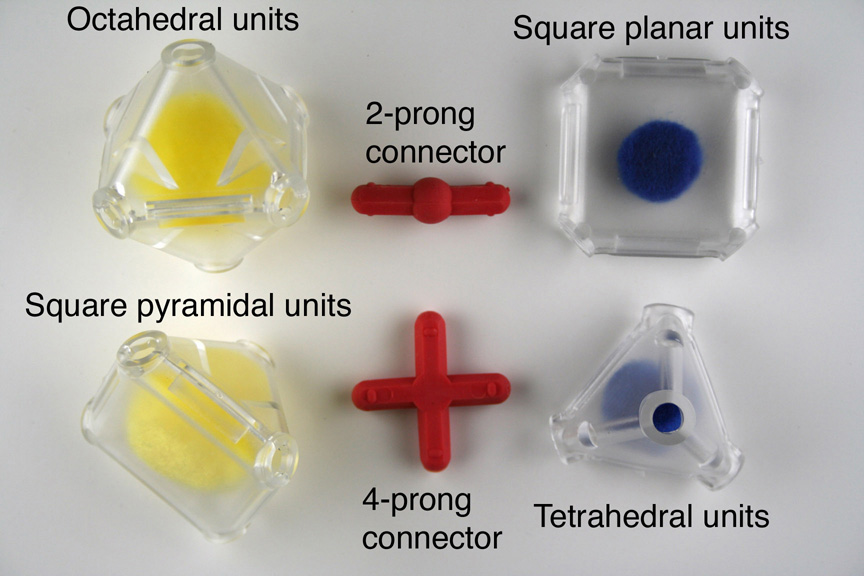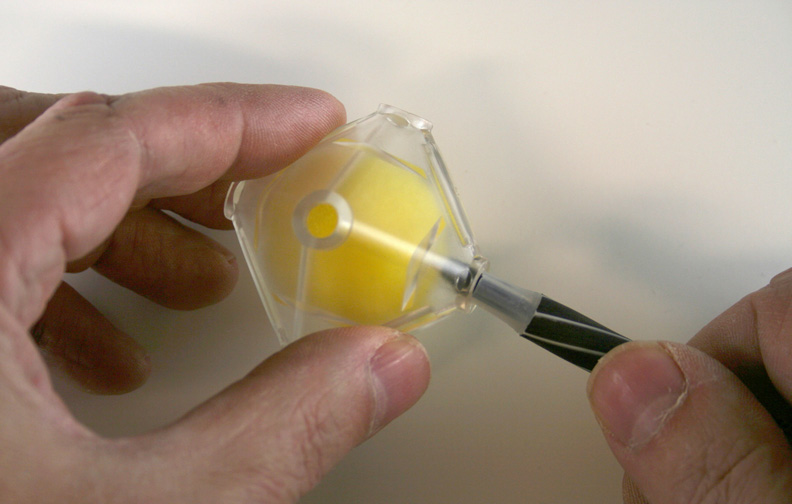Polyhedral Model Kit
Assembling tetrahedral units
Put a 1/2" blue pompom (or other color if desired) in a triangular pyramid. Snap a triangular base onto
the triangular pyramid to form tetrahedral pieces. Note the alignment pins on
the parts. It is generally easier to align one edge and then use that edge as
a hinge to fold the parts together.
Assembling octahedral units
Put a 1" yellow pompom (or other color if desired) in a square pyramid. Snap two square pyramids together
to form octahedral pieces. Note the alignment pins on the parts. It is generally
easier to align one edge and then use that edge as a hinge to fold the parts
together. Be sure to reserve 24 square pyramids for assembling square pyramidal
units.
Assembling square pyramidal units
Put a 1" pompom in a square pyramid. Snap the square base onto the square
pyramid to form square pyramidal pieces. Note the alignment pins on the parts.
It is generally easier to align one edge and then use that edge as a hinge to
fold the parts together.
Assembling square planar units
Put a 1/2" pompom in a square base. Snap a square base onto the square
base to form square planar pieces. Note the alignment pins on the parts. It
is generally easier to align one edge and then use that edge as a hinge to fold
the parts together. If the pompom does not end up in the center after the pieces are snapped together,
use something like a coffee stirrer inserted in the corner hole to push the pompom to the center.

Assembled units
Choosing connectors
Which connector to use is not a critical issue and the choice is not specified
in the directions. In general the 2-prong connector works well with the tetrahedra
and the 4-prong connector works well with the octahedra. In some structures
six vertices meet and a 6-prong connector would be ideal. In this case you will
need to use the 4-prong connector and leave some vertices adjacent but unconnected.
Again the choice of which vertices to connect is not critical but can be guided
by the need to hold layers together.
To disassemble a unit
While not a routine step, disassembly can be done a few times without damage
to the pieces. Insert a pointed cylinder such as a pencil or pen into the opening
next to a joint (not the apex of the square or triangular pyramid piece) and
pry off the base. Reassemble as before, perhaps with a different color pompom
inside.

Unit disassembly
This page created by George Lisensky, Beloit College. Last modified April 25, 2015 .